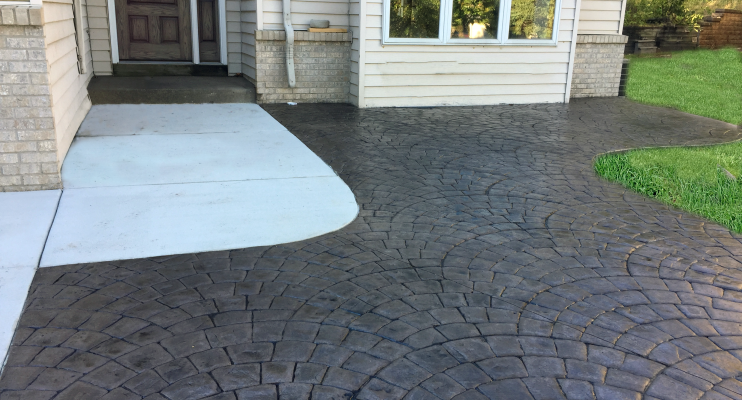When having a new concrete driveway or patio constructed in Minnesota, you might decide you want to add some color to the mix instead of going with the usual gray. Coloring your concrete may better allow you to match the style of your house or help you to stand out from the rest of the neighborhood with an eye-catching color choice.
Should you decide to have your concrete colored, there are several methods to do so, each with their own benefits and problems. Read on to learn more about the pros and cons of concrete coloring techniques.
A Guide to Concrete Coloring Methods
- Integral Color - In our experience, the best and easiest way to color your concrete is with integral color. This process involves mixing the dye color of your choice with the concrete load before we pour it to create your new driveway or patio. Integral color creates consistent color throughout your concrete so that even if the surface of your driveway or patio is chipped, cracked or worn down, it won't affect the coloration. There are about 50 different standard integral colors that we can mix up for you.
- Color Hardener - Another choice for coloring your concrete is with concrete color hardener, a dry-shake powder that can be spread over your concrete just after it has been poured. Color hardener creates an opaque color which tends to seep ⅛ to ¼ inch deep within your concrete. There can be variation in the vibrance of the color, in contrast to the consistent coloration provided by integral color. The main drawback to color hardener is the difficulty and messiness of applying it to your concrete. Stray colored powder will blow everywhere and, if you're not careful, you'll end up dyeing your clothes a different color!
- Staining - If you want to stain your concrete, you have two options: water-based stain and reactive stain. Both involve pouring a liquid solution over the surface of freshly laid concrete. Water-based stains will only color your concrete 1/16 of an inch deep. A reactive stain uses acid to create a chemical reaction which penetrates deeply into the concrete to change its color. Reactive stains are more durable than water-based stains but are tougher to pull off effectively since if the concrete surface isn't properly prepared, the reactive stain will not penetrate deeply enough.
- Painting - The cheapest option of coloring your concrete is to paint it. If you go with this method, we recommend applying a cement-based paint to the surface of your driveway or patio. While painting your concrete will create vibrant colors, don't expect them to last; Minnesota's inclement weather will quickly fade the paint.
The Best Concrete Coloring Services in the Twin Cities
If you want to add some color to your concrete driveway or patio, rely on the team with the most experience. Get in contact with Unlimited Concrete Concepts today for the finest concrete installation and coloring services in the greater Twin Cities area!